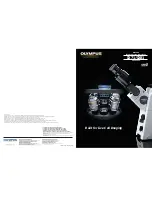
ZEISS
5 Operation | 5.4 Setting Up for Transmitted Light Techniques
6. Close the luminous-field diaphragm enough to
make it visible in the field of view (even if
blurred).
7. Lower the condenser until the edge of the lu-
minous-field diaphragm appears sharp using
the knurled knob for vertical adjustment.
8. Center the luminous-field diaphragm on the
condenser carrier using the adjustment screws.
9. Open the luminous-field diaphragm enough to make the edge of the diaphragm disappear
from the field of view.
10. Remove one eyepiece or replace it with the auxiliary microscope.
11. Check the centering of the darkfield diaphragm in the objective exit pupil.
à
The objective exit pupil must appear homogeneously dark.
12. If necessary, center the darkfield diaphragm.
13. If required, remove the auxiliary microscope.
14. Insert the eyepiece.
15. Adjust the condenser height using the knurled knob for vertical adjustment until no more
lighter areas are visible in the field of view .
16. Adjust the luminous-field diaphragm diameter to the size of the field of view.
Info
Darkfield microscopy requires samples to be considerably cleaner than in other techniques. In
particular, fingerprints, dirt or dust particles have a negative effect, as they brighten the back-
ground of the field of view and decrease the contrast of the object image.
Instruction Manual ZEISS Axioscope 5, Axioscope 5/7 MAT | en-US | Rev. 13 | 430035-7344-001
93















































